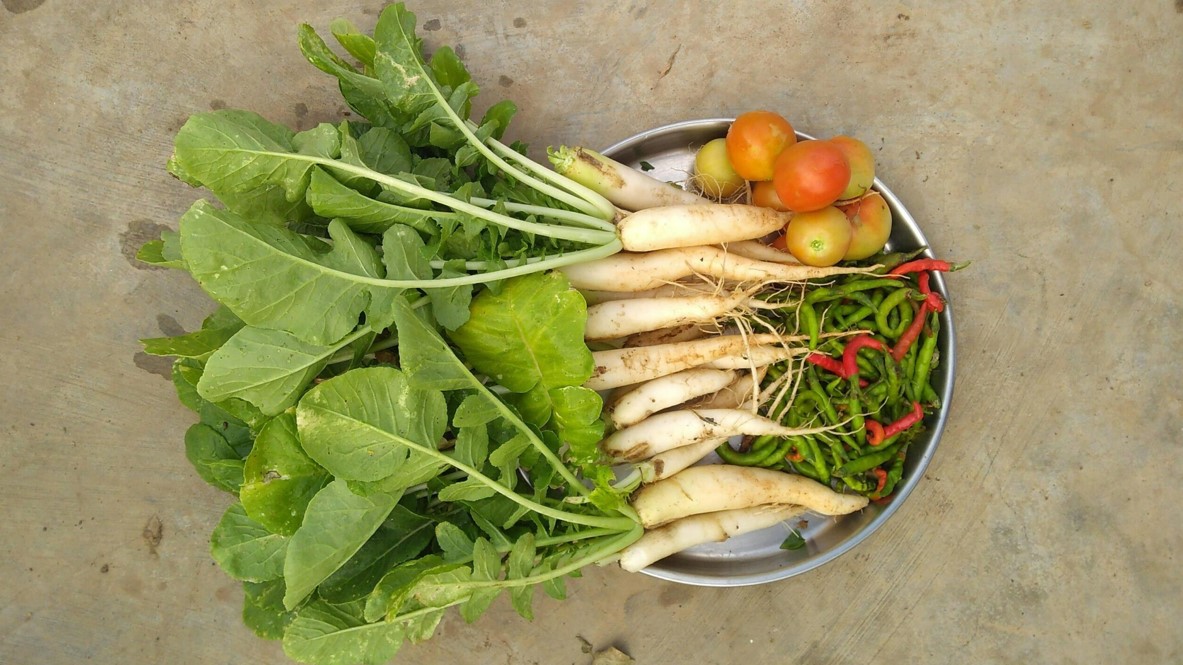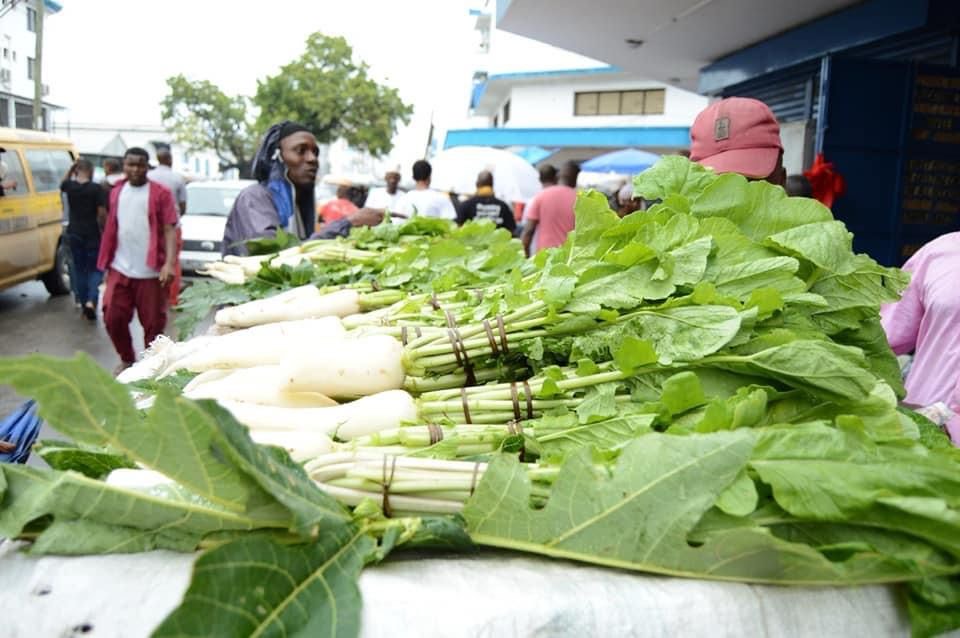Radishes add special flavour to fasting Mombasa residents

Its high juice content makes it a refreshing addition to salads, which are favoured by Muslims as they break their fast in the evening.
During the holy month of Ramadan when Muslims fast from sunrise to sunset, vegetable stalls in Mombasa will stock radishes, a common delicacy for Coast people.
Radishes have short stems and long leaves and are low in calories and high in water content, making them beneficial for people who are fasting.
More To Read
- Eid-ul-Fitr and Eid-ul-Adha: The two major Muslim holidays and what they mean
- Why Muslims are still fasting despite Ramadan ending
- Vibrant atmosphere as Eastleigh comes alive as Ramadan draws to a close
- Eid ul-Fitr in Gaza shadowed by bleakness as Israeli bombardment continues
- In Pictures: Muslims countrywide celebrate Eid-ul-Fitr to mark end of Ramadan
- Dressed in celebration: How Muslims embrace tradition through Eid attire
The water content helps to maintain body temperature and quenches thirst, which is particularly useful during long fasting hours, especially in humid cities like Mombasa.
This combination of factors helps one to endure fasting more comfortably.
The radish is a root vegetable that originated from the eastern Mediterranean region, china and middle Asia.
Strolling through the busy streets of Mombasa during Ramadan, one cannot help but notice the ubiquitous presence of radishes.
This vegetable, known for its crisp texture and sweet flavour, holds a special place in Ramadan cooking.
Its high juice content makes it a refreshing addition to salads, which are favoured by Muslims as they break their fast in the evening.
 Radish, tomatoes and chilli peppers on a plate. (Photo: Pexels)
Radish, tomatoes and chilli peppers on a plate. (Photo: Pexels)
Abdallah Khamid, a vegetable vendor in Mombasa, says the roots and leaves of the radish are the main edible components, whether consumed raw or cooked.
He adds that fans of this leafy vegetable also incorporate its seeds, flowers and pods into their meals.
During Ramadan, radishes fill every street in the port city, adding to the special feeling of the month. They are a big part of how people in Mombasa enjoy their meals during fasting.
“The weather along the coast provides just the right conditions of warmth and fertile soil for radishes to thrive, making the area perfect for growing this sought-after crop,” says Abdallah.
Radishes hold an extra appeal to Mombasa locals, particularly among the elderly, due to their delicious taste and their satisfying nourishment for the body.
Health benefits
The plant, which comes in an array of hues such as red, white, purple and black, offers many health advantages. In addition to being used in cooking, the radish also aids in freshening breath and managing body metabolism.
Salim Vae, a vendor who has been selling radish every Ramadan season, says the vegetable is well known for helping in the management of some stomach-related ailments, making it useful for alleviating problems such as indigestion when breaking the fast.
 A trader selling radishes in the streets of Mombasa during Ramadan evenings. (Photo: Farhiya Hussein/EV)
A trader selling radishes in the streets of Mombasa during Ramadan evenings. (Photo: Farhiya Hussein/EV)
Salim says that people eat both the roots and leaves of the radish as salads to relieve stomach gas and acidity, providing both a refreshing flavour and health advantages.
According to Khadija Mohammed Bafundi, a clinical nutritionist, radishes are very low in carbs, which makes them a great option when one is watching their carbohydrate or sugar intake.
“They also have few calories and a low glycaemic index — a measure of how quickly food causes your blood sugar to rise — and they are rich in several vitamins and minerals including calcium, vitamin C, riboflavin, niacin, thiamine, vitamin B6, folate, potassium, iron and manganese,” Khadija says.
She adds that one of the health benefits of the radish is a lower risk of getting diabetes.
“Radishes have chemical compounds like glucosinolates and isothiocyanate that are thought to help manage your blood sugar levels. They also have cancer-fighting properties,” she says.
The clinical nutritionist notes that many studies have shown that radish leaves have antioxidant properties which help protect one against liver, colon, breast, cervical, prostate and lung cancers.
“It lowers the risk of heart disease. Nutrients like vitamin C and minerals like calcium and potassium can help control blood pressure, which lowers your risk of heart disease. Radishes are also a good source of natural nitrates, which may help improve your blood flow,” she says.
She adds that radish leaves are believed to be good for gut health and reduce the risk of obesity. The leaves also have more fibre than the roots, and the fibre is good for preventing constipation.
“This vegetable has a natural antifungal property, meaning that it can stop the growth of fungi that cause infections. That's because it contains the antifungal protein RsAFP2. They boost iron levels in people with anaemia. Like other leafy greens, radish leaves contain high levels of iron, which is helpful for everyone, but particularly for people with anaemia (low levels of iron in their blood). And being high in vitamin C they enhance the absorption of iron in the body,” says Khadija.
However, she notes that it also has side effects such as allergies.
 Radishes have short stems and long leaves and are low in calories and high in water content, making them beneficial for people who are fasting. (Photo: Farhiya Hussein/EV)
Radishes have short stems and long leaves and are low in calories and high in water content, making them beneficial for people who are fasting. (Photo: Farhiya Hussein/EV)
“Some people may be allergic to radishes, though this is rare.”
She cautions that eating too much radish might lower one’s blood pressure.
“Since the leaves appear to help lower blood pressure, eating too many of them might make your blood pressure too low if it is currently normal. While it's unclear what constitutes "too many", it's safest to stick to one serving of radishes per day (half a cup).”
She adds that since radishes are natural diuretics — foods that lower body fluid — eating too many of them might make one dehydrated.
At the same time, since radishes appear to help lower blood sugar, eating too many of them may drop one’s blood sugar to lower levels than normal.
Some people may experience stomach irritation after eating too much radish.
“As with other fruits and vegetables, eating too many radishes or radish leaves may upset your stomach. This is because of the high fibre content,” Khadija says.
Radish recipes
Here are alternative ways to enjoy radishes in your meals:
1. Radish salad: Combine thinly sliced radishes with cucumbers, tomatoes, and red onions. Dress with a mix of lemon juice, olive oil, salt and pepper.
2. Roasted radishes: Coat whole radishes with olive oil, salt and pepper, then roast until they are tender. Sprinkle with fresh herbs such as parsley or dill.
3. Radish kimchi: Ferment radishes with garlic, ginger, chilli flakes and fish sauce to create a zesty Korean side dish.
4. Radish and cucumber sushi rolls: Roll nori sheets with sushi rice, radishes, cucumbers and avocado for vibrant sushi rolls.
5. Radish soup: Simmer radishes with potatoes, onions, garlic and vegetable broth, then blend until creamy. Season with salt, pepper and a hint of cream.
Top Stories Today












































